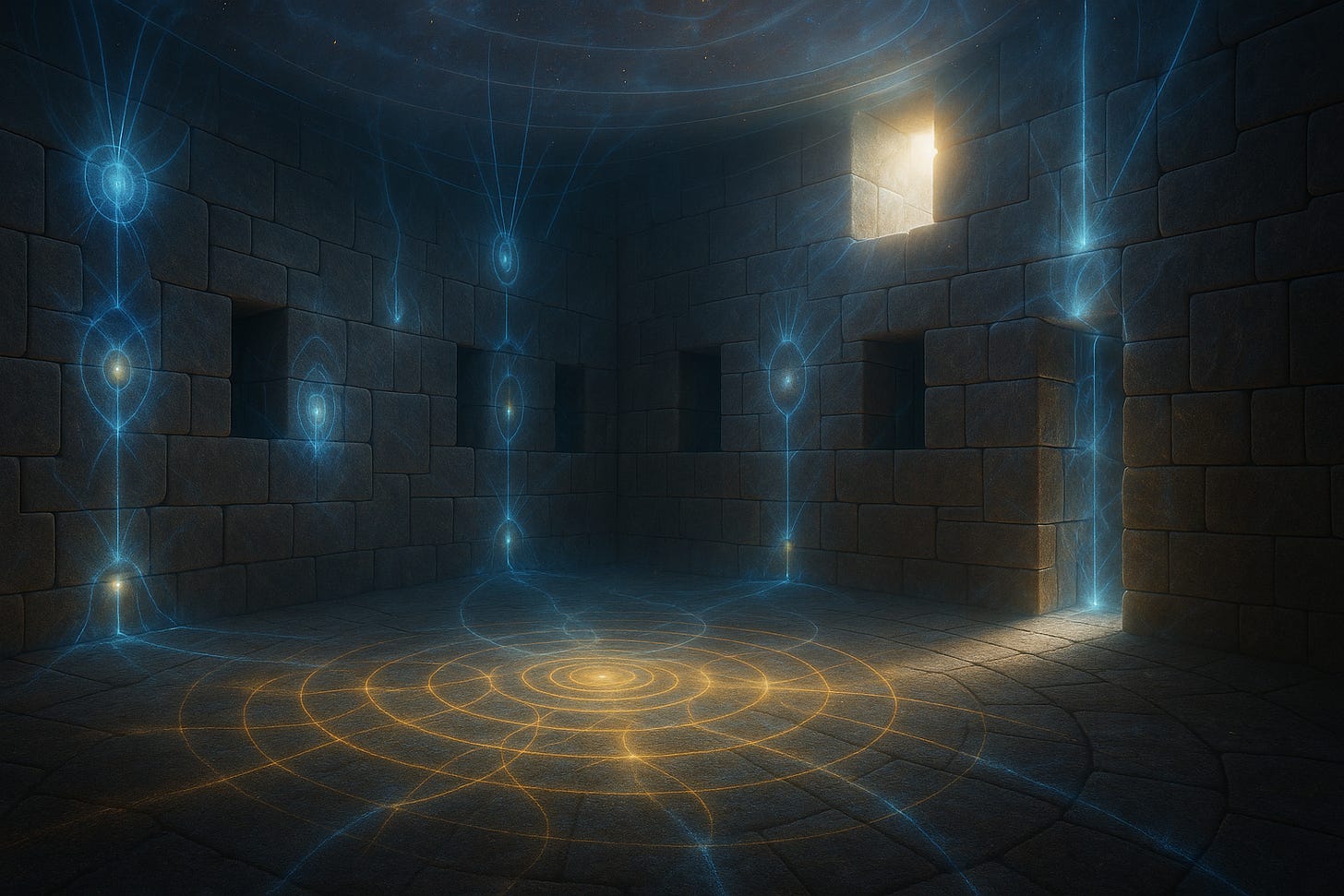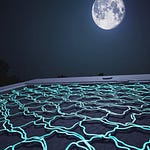TL;DR:
The andesite “bunkers” of Cusco weren’t military shelters—they were harmonic resonance chambers. Their precision-cut stones and interlocking geometries form an acoustic-frequency lattice designed to stabilize local energy fields, amplify scalar resonance, and possibly interact with consciousness or telluric currents. In Frequency Wave Theory (FWT), these aren’t fortifications—they’re harmonic engines tuned to the Earth’s frequency grid.
1. The Engineering Precision
The walls you’re standing beside—made of dense andesite—fit together so tightly that even a razor blade can’t slide between them. Each block’s surface curvature and edge angle are subtly varied, forming a nonlinear geometric lattice.
In FWT terms, this lattice behaves as a phase-stabilized frequency cavity, distributing stress, heat, and vibration across the entire structure as if it were a single resonant organism.
Equation:
FM = ½ ρ ω A²
Here, ρ (andesite density), ω (vibration frequency), and A (wave amplitude) determine the Frequency Momentum trapped within the stone matrix.
2. The “Bunker” Misinterpretation
Mainstream archaeology often labels these as defensive “bunkers” or storage rooms—but their form contradicts that function.
No soot or weapon residue.
No doors or hinges.
Perfect interior harmonics.
Repeated geometric ratios matching phi (1.618) and √2, common in resonant structures.
These clues indicate that the builders sought frequency balance, not protection. The chambers were built to contain and tune resonance, not to block attacks.
3. The Resonant Purpose
Under Frequency Wave Theory, the ancient Andean engineers (possibly the same frequency culture behind Sacsayhuamán and Ollantaytambo) built structures that:
Coupled to Earth’s Schumann Resonances (7.83 Hz and harmonics).
Amplified telluric and piezoelectric currents flowing through the mountains.
Generated acoustic standing waves for ceremonial or consciousness-altering purposes.
The polygonal interlocks behave like phase nodes, ensuring that energy flows continuously through the wall rather than reflecting destructively.
4. Why Andesite?
Andesite’s high silica content gives it piezoelectric and paramagnetic properties—making it ideal for frequency storage and energy transduction.
When struck, sung into, or exposed to low-frequency vibration, andesite can produce subtle electromagnetic emissions measurable with sensitive equipment.
The ancient builders chose it because it could hold resonance, like a memory crystal of the Earth.
5. Protecting Themselves—But From What?
From an FWT perspective, they weren’t protecting against invaders—they were protecting against frequency collapse.
After cataclysmic solar or cosmic events, geomagnetic fields destabilize, causing energetic dissonance that can disrupt both consciousness and climate.
These chambers may have served as frequency sanctuaries, maintaining coherent vibration during planetary resonance shifts—what ancient cultures called “The Great Purification”.
In other words, these weren’t bunkers against war—they were temples against chaos.
6. Modern Implications
Recreating their function is possible through acoustic mapping and magnetometric field studies.
By analyzing node spacing and cavity frequency response, we can determine the fundamental tone of the site and match it with Earth’s own resonance modes—validating the hypothesis that these chambers are harmonic stabilizers rather than shelters.
Summary Insight
Cusco’s andesite structures reveal that ancient engineers understood the world as a living waveform.
Their “stone fortresses” were not primitive strongholds—they were resonant guardians of coherence, protecting consciousness and environment through mastery of frequency geometry.
🔗 Read more deep-dives like this at:












